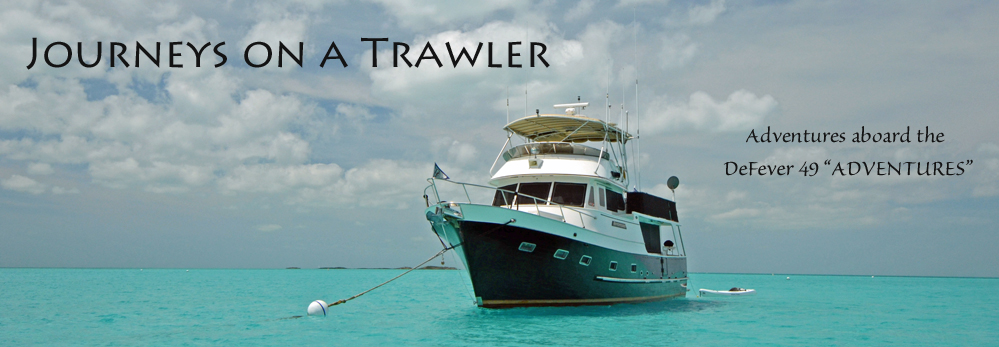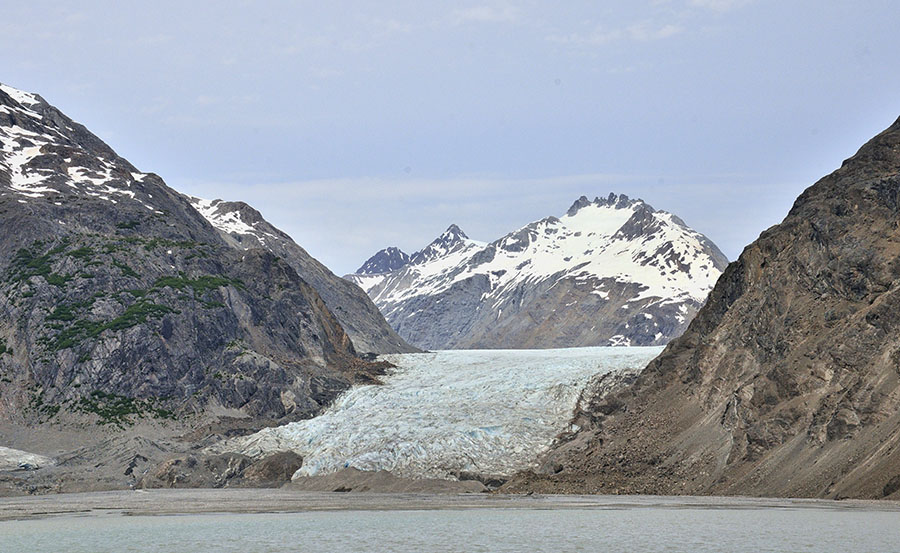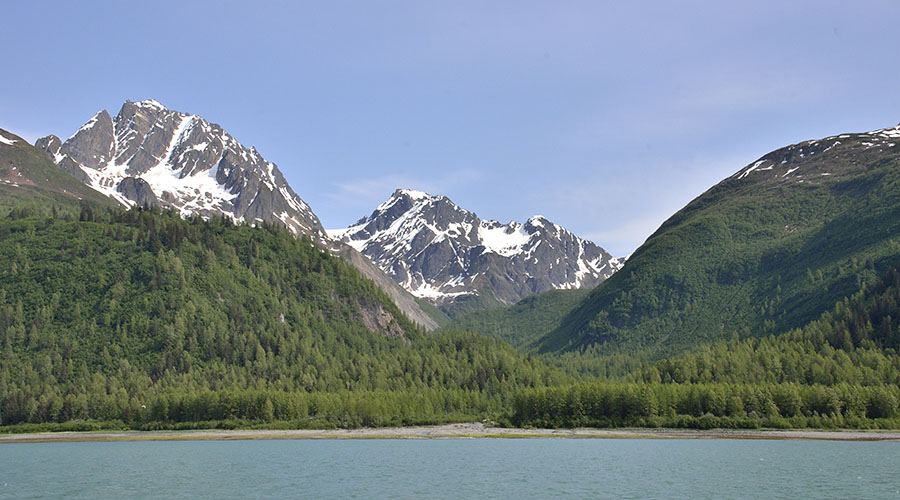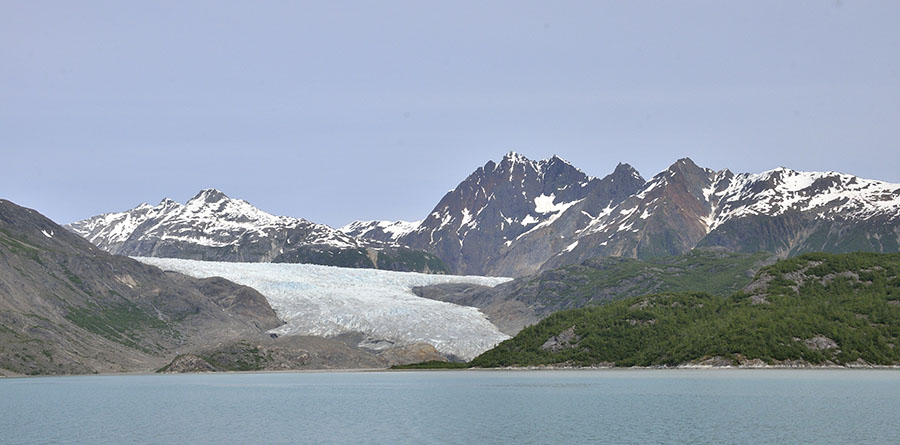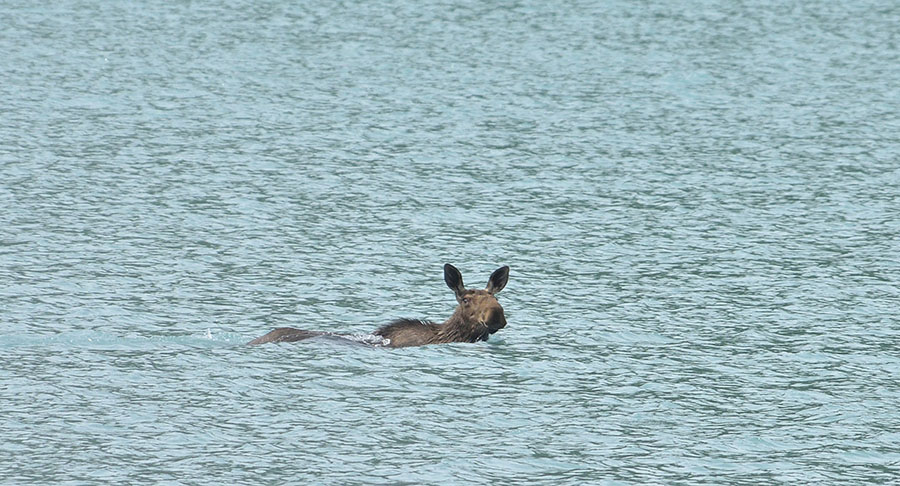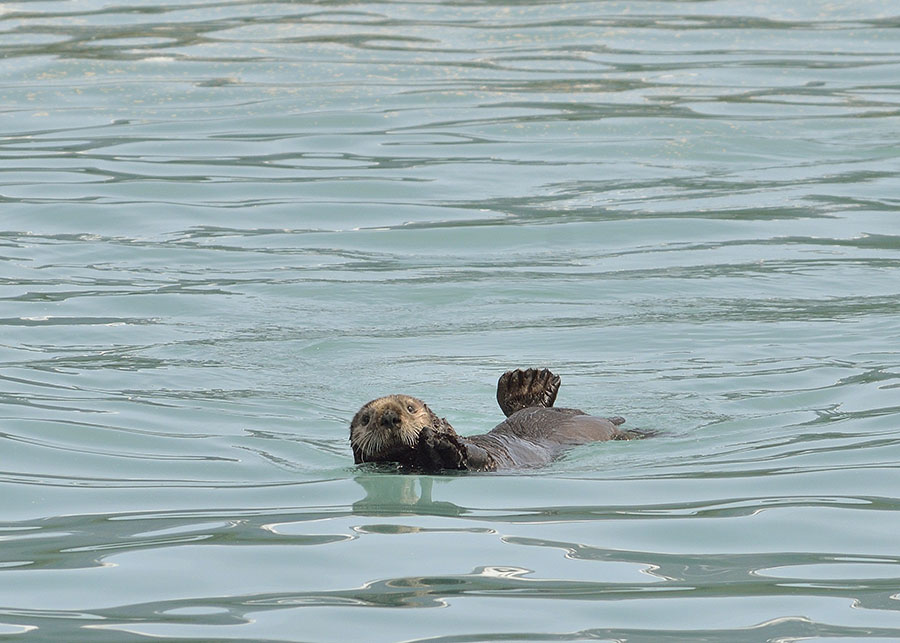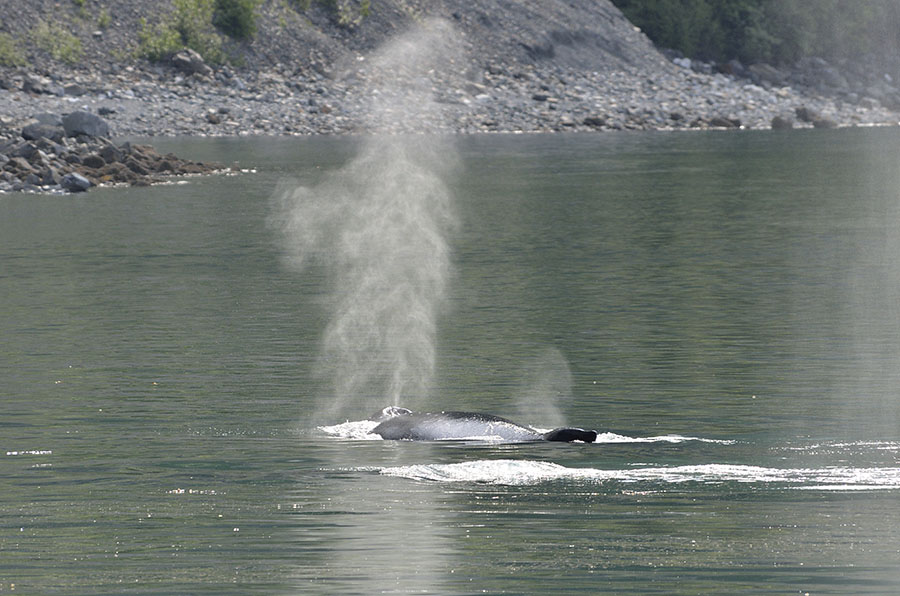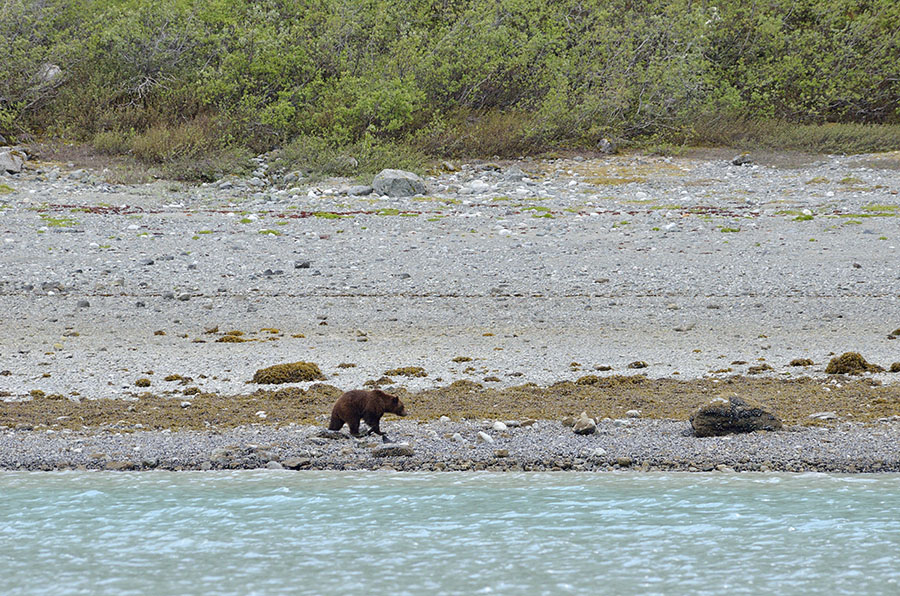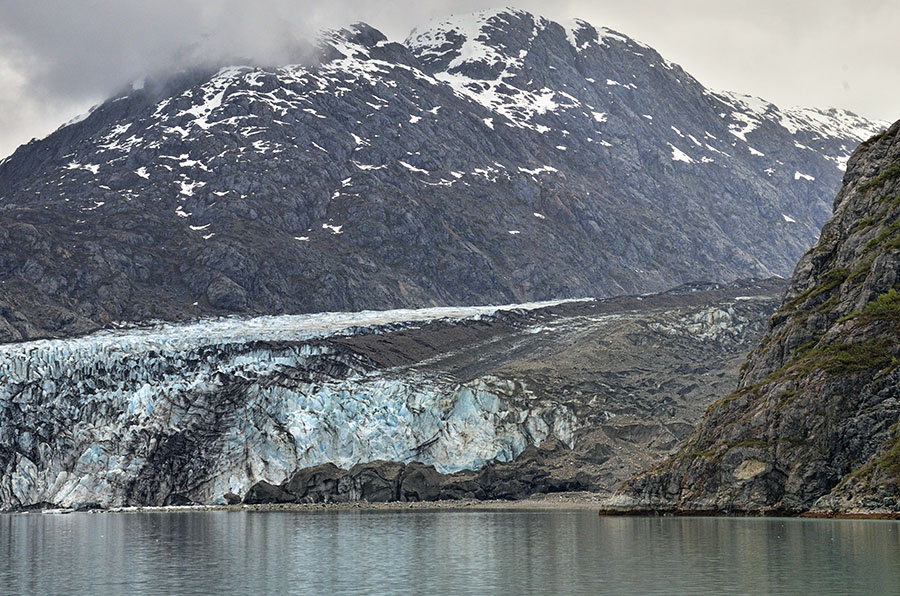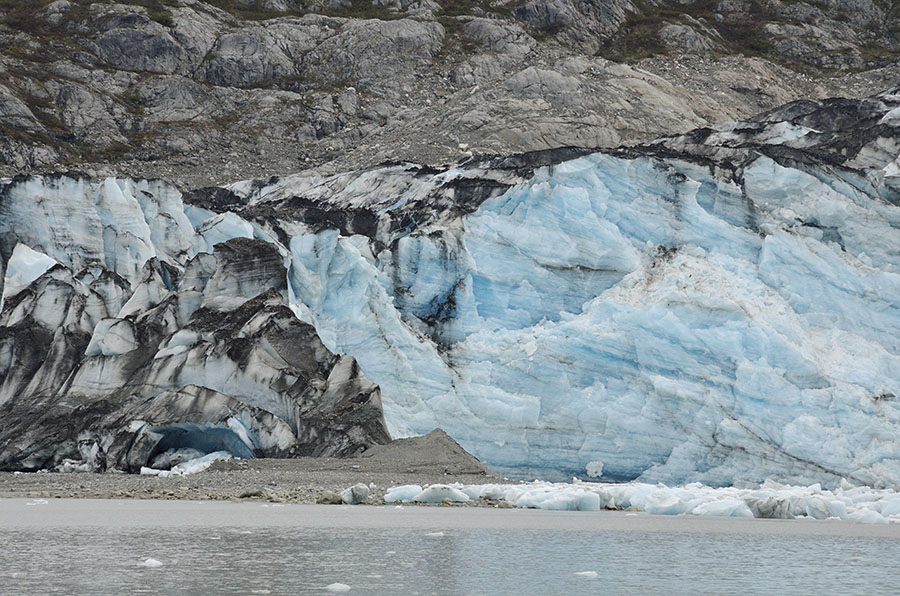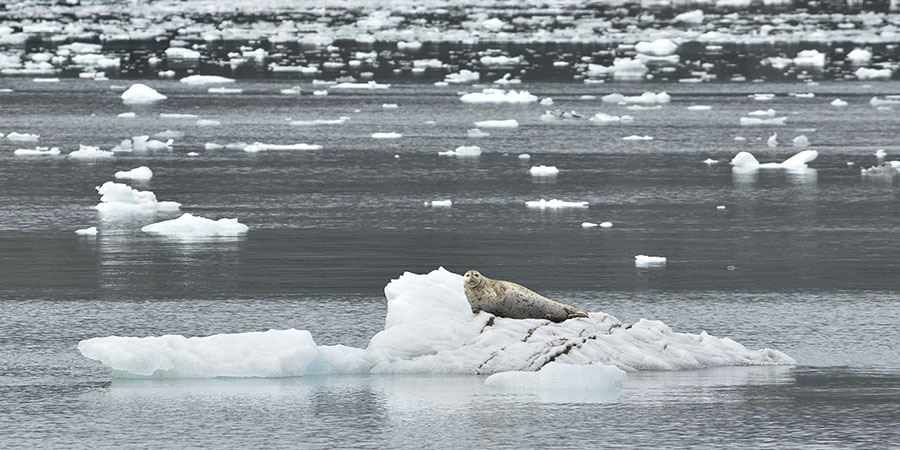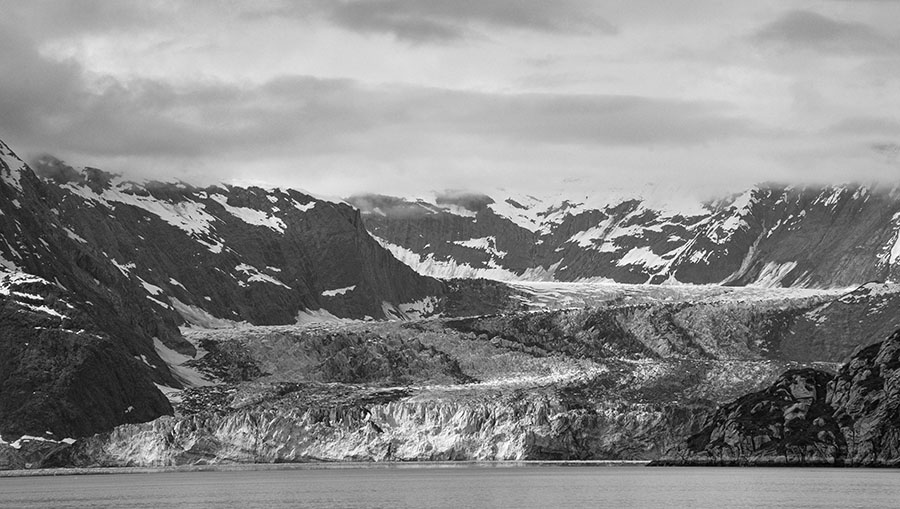In the last post I mentioned that there were two more glaciers to show you. But really, there are three. We can anchor in a little inlet created by the Reid Glacier – there’s something special about being able to study the glacier day after day, in all different weather conditions and as the light changes throughout the day. We’ve hiked up and touched this glacier a number of times, even climbing on its edge. It has become an old friend, and our hearts break as we watch it shrink.
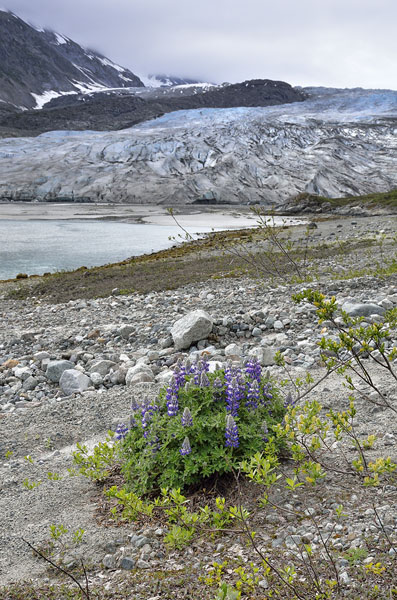
Getting near the glacier is a bit “sporty” – the putty-colored water is made opaque by the silt (“glacial flour”) created by the glacier inexorably grinding rocks on rocks under tremendous pressure. We take the dinghy as close as we dare, then beach it based on what the tide is doing. Our 100′ anchor line may not be long enough for a 2 hour hike on shore when the tide is rising – the water can cover the anchor and we would have a VERY long wait for the water to fall again… on a beach where bears look for clams. And where the weather can change quickly bringing chilling winds down the glacier from the mountains. The black oystercatchers nest among the cobbles above the tide line – this one made a racket at us until we were safely away from its nesting area.
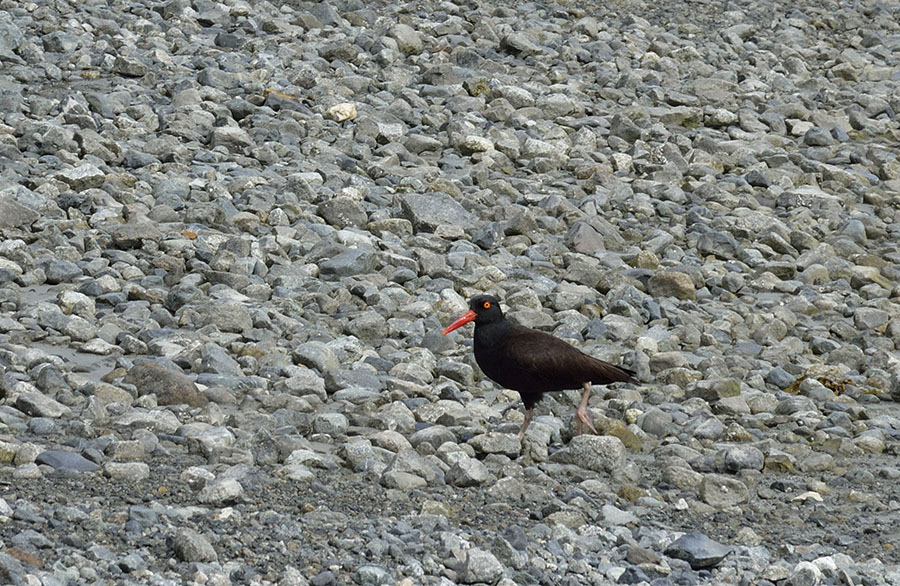
Other small shorebirds also nest in the rocks and sparse beach grasses – we’ve seen plovers and sandpipers, arctic terns and gulls. If the tide is low, we can slip and slide over the silty mud and walk around to the side of the glacier, next to the roaring melt stream. If the tide is high we have to hike up and over a rocky promontory to get there. But the effort is worth the result! Here’s another experiment with black and white photos – a view of the side of Reid glacier, rising clouds from the surrounding mountains, and the raging melt water rushing by.
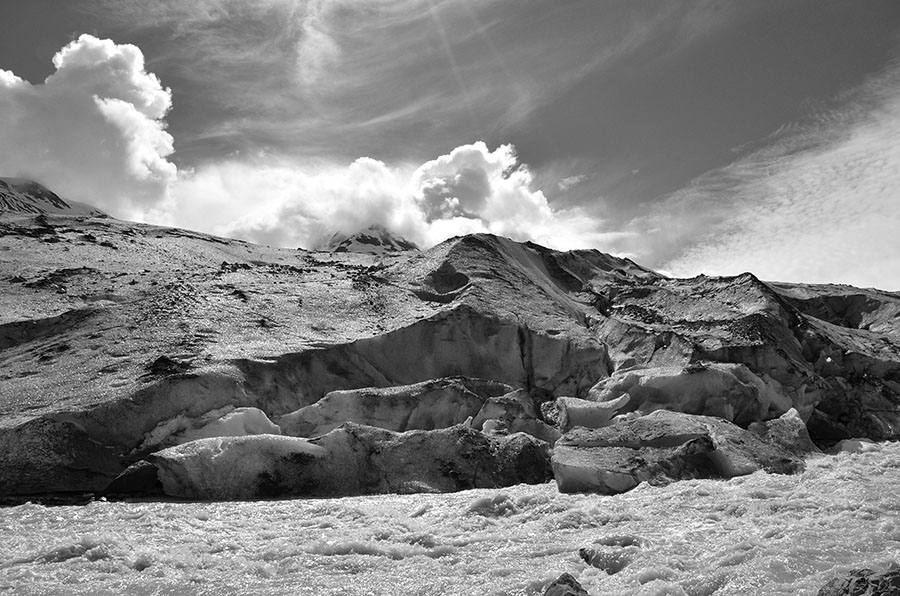
The glacier looks dirty, and it is. Glaciers are movers of rocks and dirt, down from the mountains. Rocks that we’re walking on started somewhere way up there. And before that… well, it would be nice to have a geologist handy because I have a LOT of questions!
But I promised you more glaciers… and so I’ll introduce the Grand Pacific and the Margerie. The Grand Pacific is the grandmother of the glaciers in this part of the park – it’s the big one that gathered up all the other ones and filled the entire bay during the Little Ice Age in the 1750s. Now, it doesn’t look very glacier-y, until you study it more closely with binoculars. The ice is smooth, thin, and utterly covered by grit and dirt.
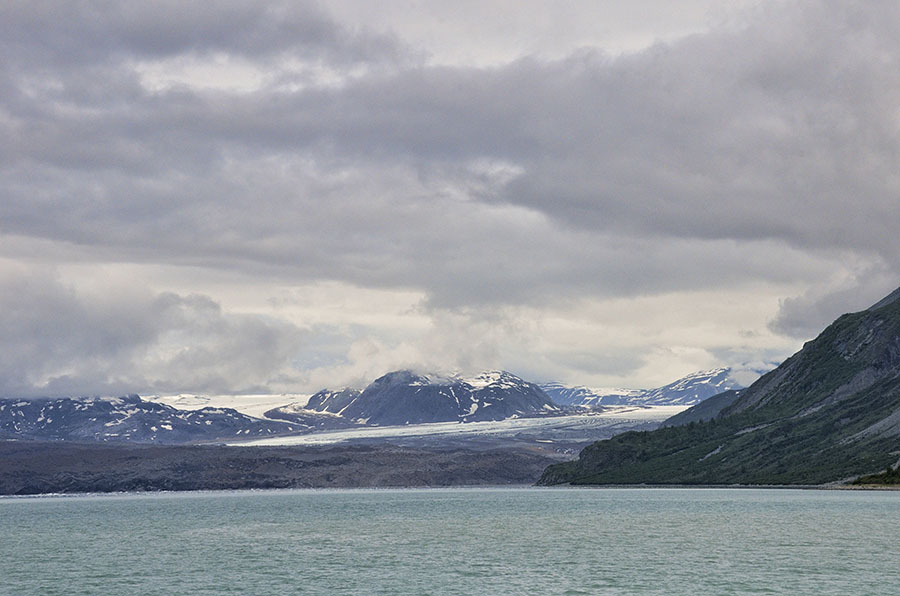

Most people get all excited by the splashy, sparkly Margerie glacier, but the Grand Pacific – now retreated into Canada – is still an impressive river of ice. Here (below) is the Margerie – if you’ve ever taken a cruise ship that went into Glacier Bay, this is the one everyone has photos of.
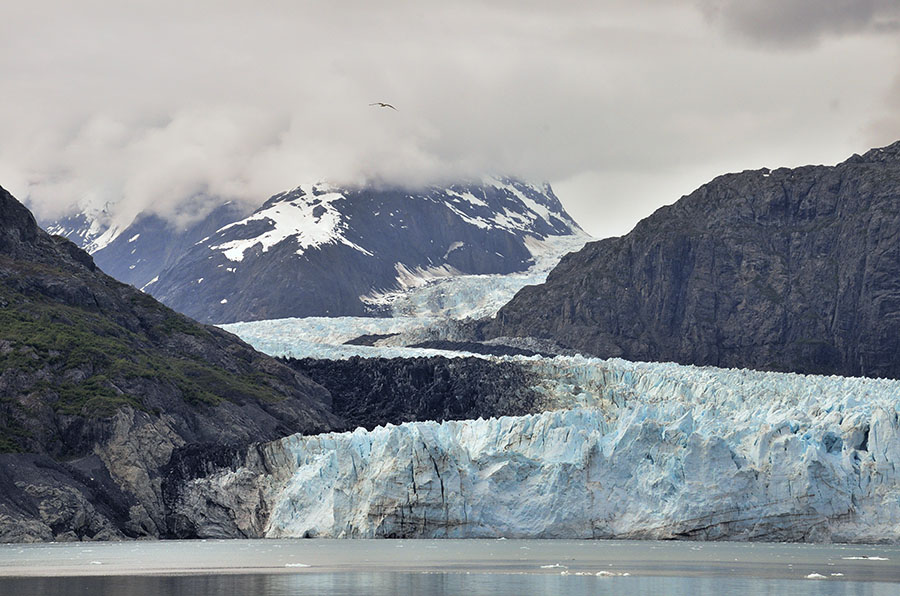
The brash ice was very light on this visit, so we were able to get farther north than ever before, giving us this nice view looking up the glacier. I don’t know why glaciers twist and turn as they do, but it’s a beautiful sight. We approached the face more closely, studying the details – the spires called seracs, the cracks showing intense blue inside, seams and lines and boulders trapped within.
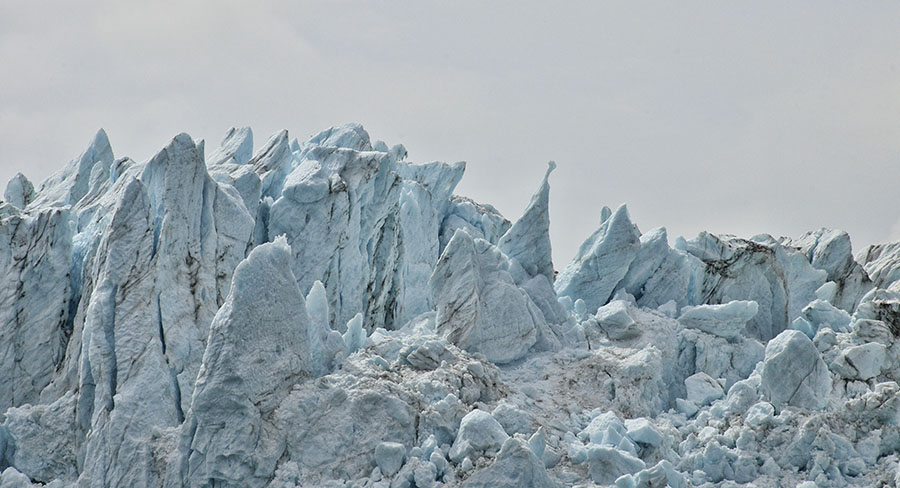
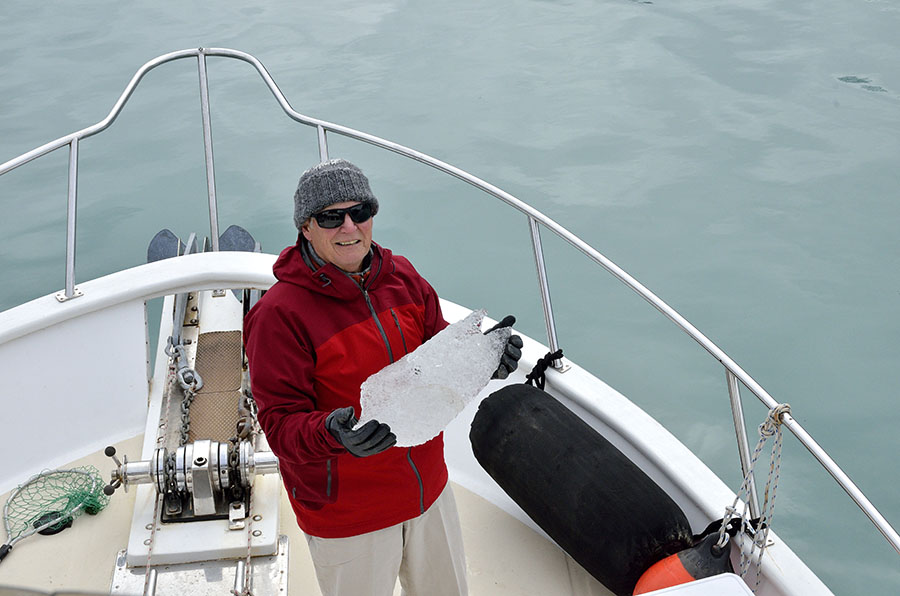
We can’t stay up-bay forever, so we reluctantly turned south to cruise through this magnificent land and seascape.
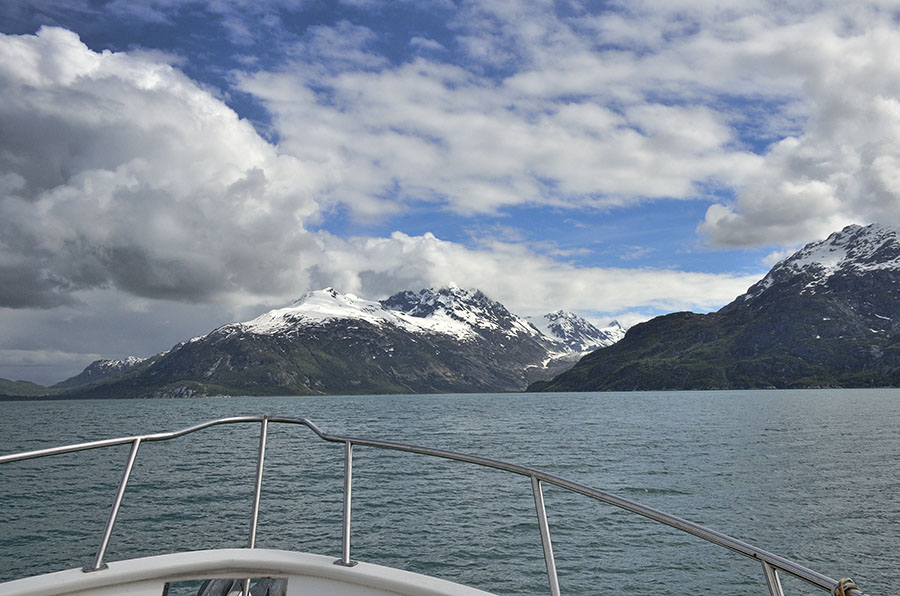
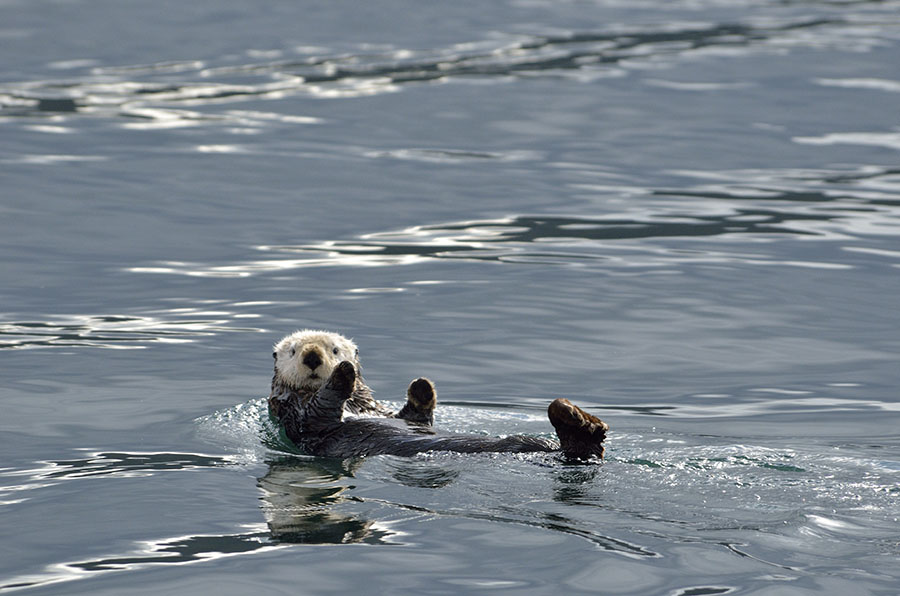
Back at the park headquarters complex we noticed changes in the plants – paintbrush was now blooming…
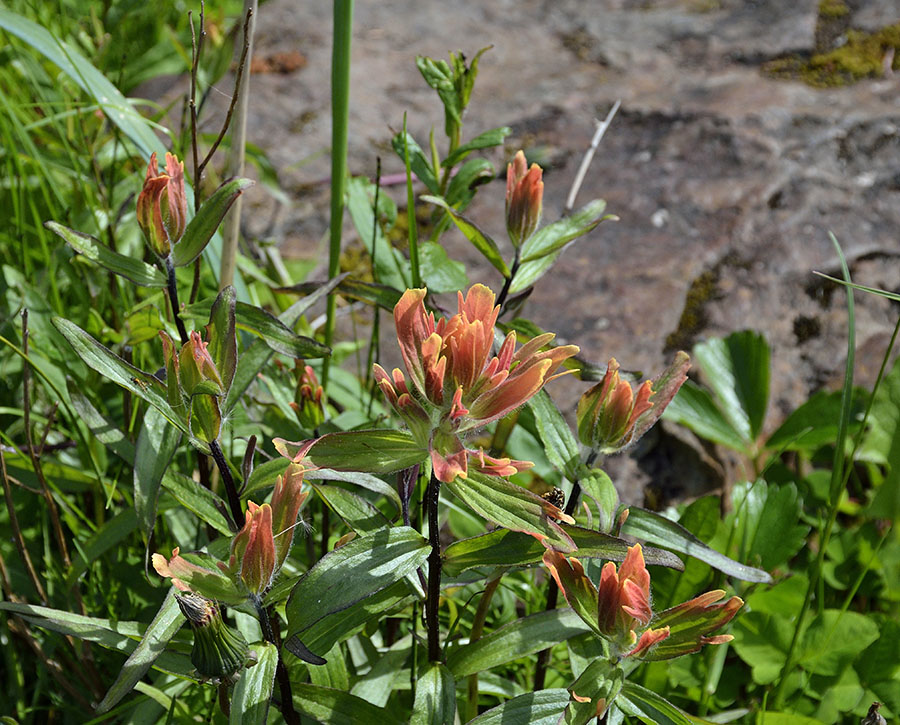
…and salmonberries lost their blooms and started to form fruit.
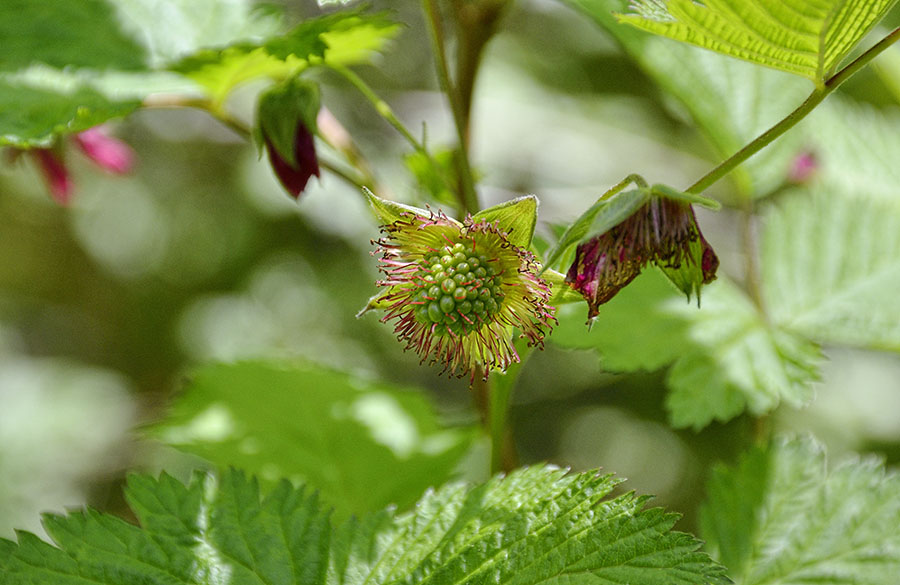
We found a porcupine hanging around a little culvert, and one of the rangers told us that they like to sleep in there in the winter.
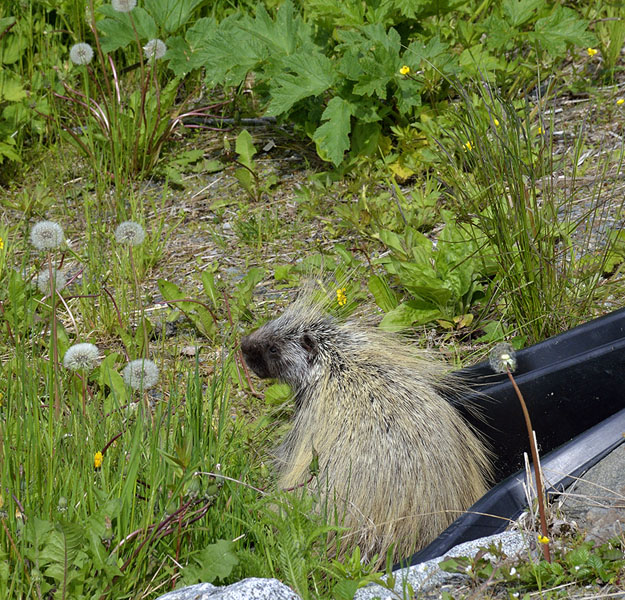
Every visit to Glacier Bay is different. We hear new native stories or learn new details of familiar ones. We see new things we never noticed before on a totem pole. Plants are in different stages of growth. Animals run across our path – it could be a grouse, a porcupine, a bear, or ?? The glaciers change more slowly, but noticeably from year to year. The clouds hide the tall coastal mountains, but sometimes they lift to let us see 15,000′ Mount Fairweather and its massive neighbors.
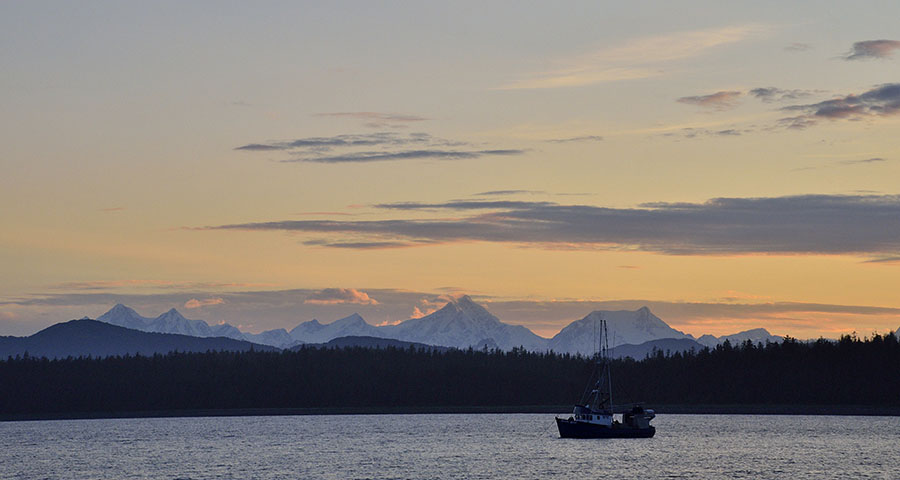
We’re heading back into remote areas with no Internet signal for a while, but that means we have more time to explore and photograph. It’s all good.
